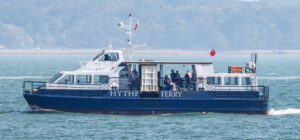830: Number of DCO applications reaches new record

Angus Walker Partner
Today’s entry reports on a peak in the number of applications for Development Consent Orders.
Following the application for the Norfolk Boreas offshore wind farm on Tuesday, there are now 28 live applications at some stage between application and decision, beating the previous peak of 27 reached in August 2014.
The story since the start of the regime in 2010 is one of rise, fall and rise again, as there was a low of just four live applications in the summer of 2017. The next decision is due on 8 July, so there are a few weeks for more applications to be made to increase the total even further. One on which we are acting is expected to be made next week, so that will make 29 – can 30 be achieved?
The mix of applications has changed since the previous peak. Then, of the 27, 19 were for energy, six were for transport and two were for waste. Now, the 28 are comprised of 14 each for energy and transport. Of the 14 transport projects, eight are being promoted by National Highways, by far and away the most promoted by a single organisation simultaneously.
That last fact goes some way to explaining the recent steep rise in applications, but not all – there would still be 20 if it was not for National Highways. Breaking the energy categories down further there are five fossil fuel generating stations and one energy from waste station, four offshore wind farms, one nuclear power station and one solar farm. Thus electricity generation has had renewed popularity, but has around the same renewable / non-renewable split as it did at the last peak – about 50/50 – when you might have expected that to have changed.
There has been an increase in rail freight projects from one to three, suggesting a mini-surge in the need to move goods around – does that match the decline in high streets, as people order home delivery rather than going out shopping? Perhaps.
There are four offshore wind farm projects, but this will begin to tail off until the Crown Estate offers new sites for leasing, since most of the existing sites have been consented. Its fourth round of sites for bidding is expected later this year, and there will then be a lead-in time before any applications for DCOs are made.
The remaining projects are an airport, a pipeline and a power line. There should be an upsurge in airport projects over the next couple of years – Heathrow starts its statutory consultation next week for a third runway, and the expansion of Luton Airport is now on the Planning Inspectorate website. A rival Heathrow project has also appeared, and although not on the website, Gatwick has announced it is considering turning its emergency runway into an operational one. It will be interesting to see what effect the forthcoming change in Prime Minister will have on government airport policy.
One development that has probably yet to have an effect is the involvement of the National Infrastructure Commission, as it is too recently-created. Indeed, the government is set to renege on its pledge to respond to the NIC’s National Infrastructure Assessment within a year, which would have been by next month, preferring to wait until the autumn. The surge in projects may therefore be in spite of, rather than because of, anything the government has done.
All in all it is good to see so many applications, meaning that the improvement of the nation’s infrastructure is going full steam ahead (to use an inappropriately old-fashioned expression), having stalled only five years ago.
Live DCO applications by date and type
Click image to enlarge











